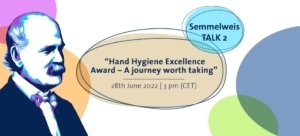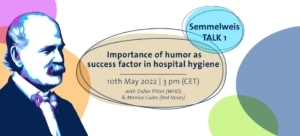In August, the Access to Medicine Foundation published a methodology for the first Antimicrobial Resistance Benchmark. This is the first independently developed framework for analysing how the pharmaceutical industry can limit AMR. We interviewed Jayasree K. Iyer (Executive Director) about how the Benchmark will work and what expects her team to find out.
First of all, what is the AMR Benchmark?
The AMR Benchmark will map how 30 pharmaceutical companies are responding to AMR – specifically, we are looking at 15 areas that companies are expected to prioritise. For example, we are looking at their antimicrobial Research & Development pipelines, their strategies for responsible manufacturing and production of antibiotics and at their plans for stewardship and ensuring access to antimicrobials.
Our goal is to clarify for the companies in scope – and for other stakeholders working in AMR – what is working, who is taking action and whether there are barriers to further action that could be minimised or removed. We just published our methodology and are now gathering data and starting the analysis process. The Benchmark report will be published early in 2018.
How did you identify the areas that pharmaceutical companies need to prioritise?
The AMR Benchmark is the first framework of its kind that has been independently developed. We spoke with a wide range of stakeholders and experts working on AMR – including people from the UK and Dutch governments, World Health Organization, Chatham House, Pew Charitable Trusts, the Review on AMR, the AMR Industry Alliance, CARB-X, the DRIVE-AB project, and many others as well as other pharmaceutical companies and investors. Our aim was to identify where stakeholders agree pharmaceutical companies can and should be taking action to curb AMR.
So what do you see as the main priority for pharmaceutical companies on AMR?
AMR can be understood as an access issue with two sides to the coin. One side is about ensuring all of us alive today can access antimicrobials as and when we need them. The other side is about ensuring antimicrobials remain an option for our children and for their children. If no action is taken now to develop and conserve antimicrobials, then we put the global healthcare system at risk. Without antibiotics, there is no safe invasive surgery, no emergency medicine, no direct treatment for infections.
Where can we read about your findings? How are you expecting the actions of the individual pharmaceutical companies to differ from each other?
The Benchmark will be published on our website early next year. To give a flavour, it will include an analysis of companies’ antibiotic pipelines and an assessment of stewardship and access plans, as well as a breakdown of how each company in scope is responding. We are looking at the actions of 30 companies, including large research-based pharmaceutical companies, generic medicine manufacturers and clinical-stage biopharmaceutical companies. Each of these companies has a different set of opportunities to take action that is determined by their expertise, products and reach. Larger companies with big R&D divisions, for example, have different opportunities to biopharmaceutical companies dedicated to developing one or two really promising antibiotics.
Do you expect pharmaceutical companies to be taking different steps in low- and middle-income countries?
Yes, we do. It is these countries where the misuse of antimicrobials is likely to continue to grow – while at the same time, millions of people cannot access antibiotics when they need them, despite having curable infections. To curb AMR, we need stewardship and access to be managed together. And pharmaceutical companies can make an important contribution, for example by setting affordable prices and improving supply chains, while also supporting national AMR surveillance systems and working with healthcare practitioners to reduce uncontrolled use.
The aim of the Access to Medicine Foundation is to guide positive change, spur deeper company engagement and challenge the barriers to progress. How do you make this happen?
Our work does not stop with the publication of our research. In many ways, that is the beginning! We will be talking to the companies in scope about what we have found – where they have done well and where we feel they have opportunities to do more. This is a core part of our engagement programme dedicated to pharmaceutical companies, which also includes outreach to companies not covered by the Benchmark to share insights into what works well. We will also feed the findings into our engagement work with other people and organisations. AMR can only be brought under control by everyone working together.




